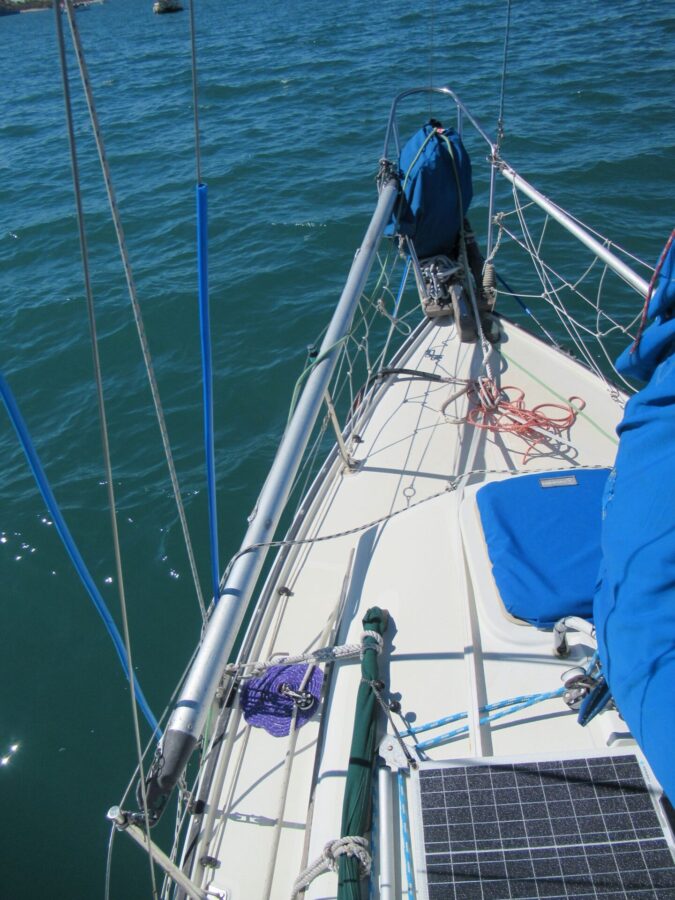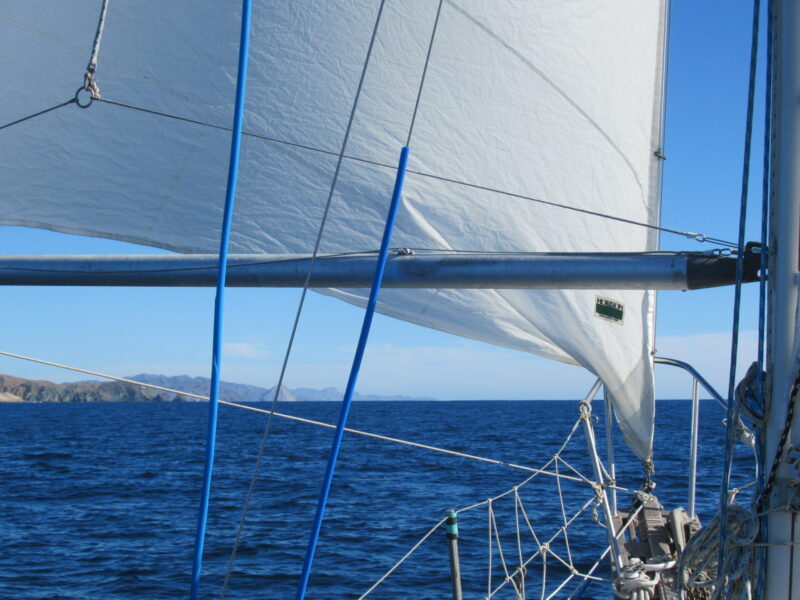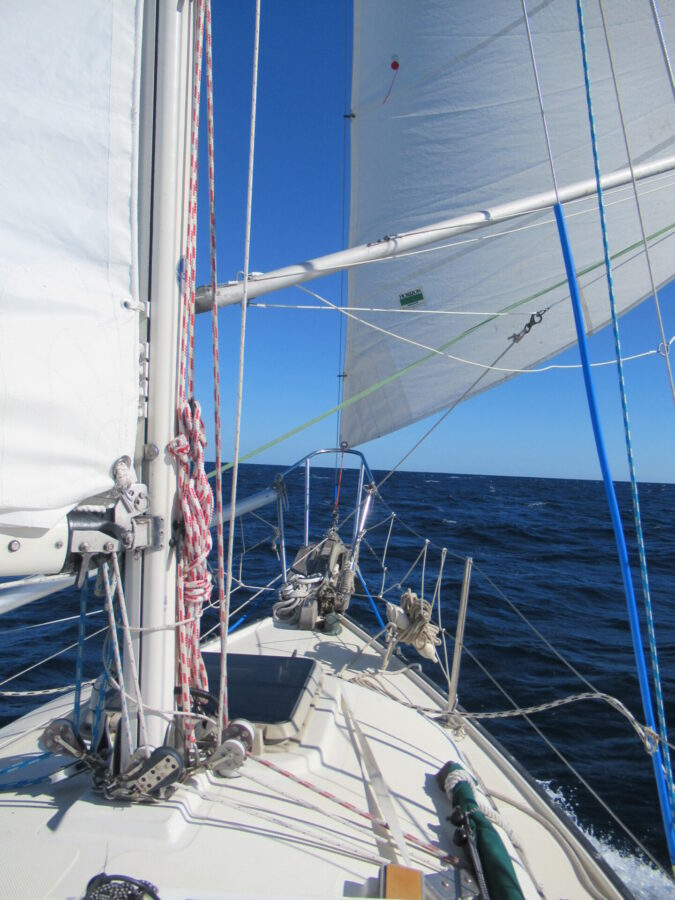
The Resourceful Sailor Talks Whisker Poles — the Good and the Better
The Resourceful Sailor, a late bloomer to whisker poles, reflected on their role aboard Sampaguita, a 1985 Pacific Seacraft Flicka 20. Sampaguita travels with two whisker poles. One, 9-ft 6-in long with a 3-in diameter, came with the boat, and one, 8-ft long with a 1.5-in diameter, was purchased for $20 from the local marine thrift store, shortly before my leaving on the present voyage from Port Townsend, WA, to La Paz, Mexico.

I rebuilt the larger one when I was refitting the other spars on Sampaguita. It entailed changing out the corroded control lines and replacing them with Dyneema, removing all the fasteners and end pieces, inspecting, cleaning, lubricating, Tef-Gelling, and reassembling them. Less time and energy were put into the thrift-store pole because it was still serviceable, its place and function on the boat were unknown, and at $20, there was little expectation of it. From my experience working foredeck on the Thunderbird one-design racing fleet in Port Townsend and flying a spinnaker with similar-sized poles, I had heard tales of their breaking. They can flex alarmingly under that load. It was an opportunistic purchase and meant as a backup for the original spar.

As it turns out, both poles have their function on the boat, and the second-hand pole has turned out to be one of the best-spent $20 aboard. Sampaguita has a gennaker, often called a cruising spinnaker, rather than a true spinnaker. I inherited this sail when I purchased the boat in 2013, so to thwart debate on the advantages and disadvantages between the two, let’s say the best spinnaker is the one you already own. As a singlehander, I find the gennaker a simple sail to set and douse. Fortunately, it doesn’t require a pole because neither of my poles is long enough to accommodate it. And if I had a longer pole, Sampaguita herself hasn’t enough space to accommodate that. For the true spinnaker enthusiasts, I recognize the gennaker is more of a reaching sail than a downwind one.
It turns out that Sampaguita’s Windpilot self-steering windvane loves to sail her dead downwind, which was a pleasant surprise. Therefore, I can use the poles on Sampaguita’s various hank-on headsails, either reaching or wing and wing, or as the Chileans put it, and a lot more fun to say, orejas de burro (donkey ears). The shorter pole works well with the 100%, 80%, and storm jib. Because a Flicka 20 sails like an overweight, full-keeled dinghy, the forces on the sails are nothing like what you experience on cruising and racing boats of a larger size. Having sailed over 3,700 miles this past year from Port Townsend to La Paz, Mexico, with hundreds of miles of it using this pole, I have never seen it bend. What was purchased as a throwaway replacement has turned into a steadfast workhorse. And this pole is so light and easy to put up and take down, with no dread or hesitation.

The 140% genoa and 140% drifter use the longer pole. It is a little short for both, but as mentioned before, Sampaguita cannot practically accommodate the storage of anything lengthier, and the best pole is the one you have. This pole is just long enough that I can make it work. It is, however, noticeably heavier and more awkward to handle on the foredeck. Breaking the hatch or falling overboard seem more likely when handling this pole. It, therefore, incurs a slight bit more hesitation when pondering its use.
The Resourceful Sailor has learned through life that practicality and affordability rarely offer perfection. He nurtures his resourcefulness and makes do with what he can have. The pole that came with Sampaguita saw rare use until the last couple of years due to a lack of practice, intimidation, and less need for sailing on inland waters. With new sails, new experiences, and new sailing waters, the poles are a requirement. A spare seemed like a requirement, but the cost of a new one was prohibitive. The second-hand option was a shot in the dark, but one that appeared to be spot-on. Or at least close enough for a kill. The sea state of an ocean demands the use of whisker poles. You often won’t have enough wind to keep the sails full as you roll, yaw, and pitch. Without them, your sails will deteriorate quickly, while the boat goes nowhere. Remember, keep your solutions safe and prudent, and have a blast.
What are your pole solutions and compromises? Please feel free to spread the word below, and thanks for reading.

For me, from now on, orejas de burro! So much more fun! Thank you.
Precisely what I thought too! Thanks for reading.